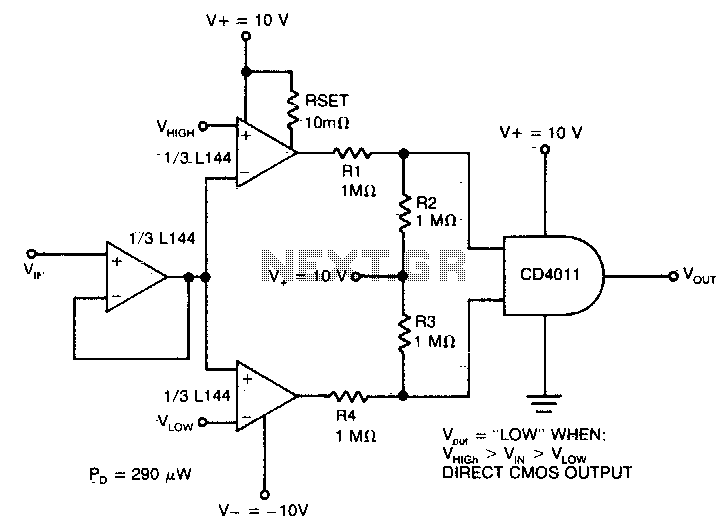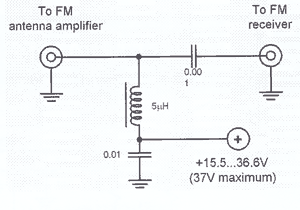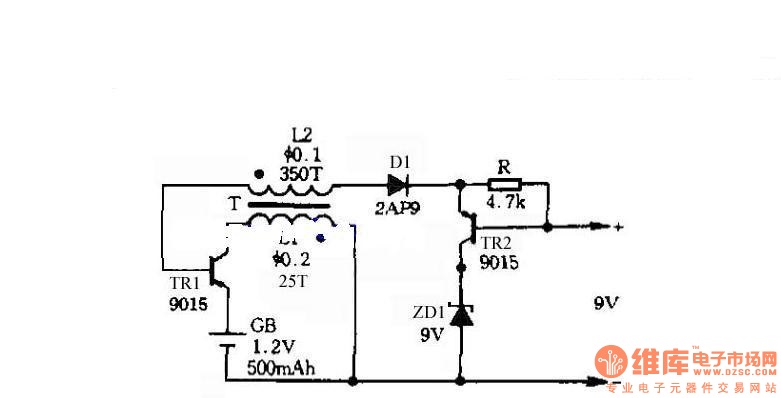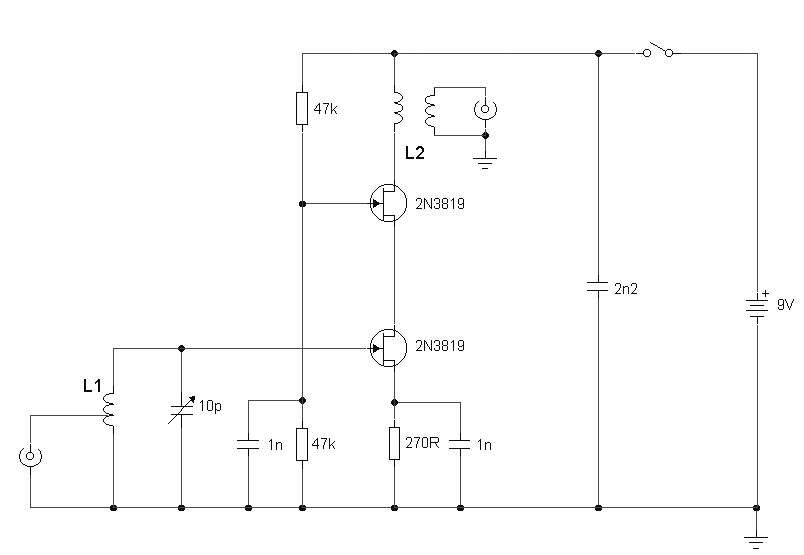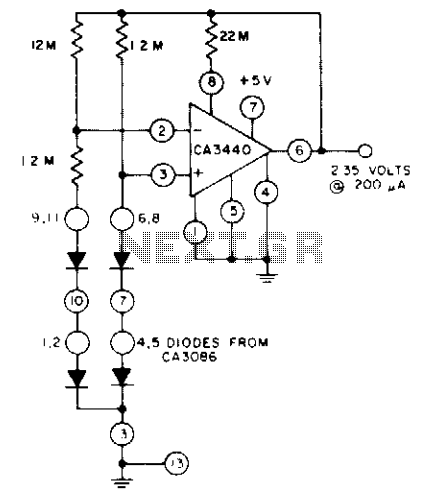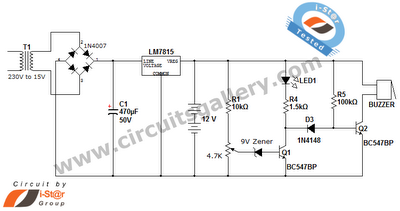
mic preamplifier circuit based tlc251
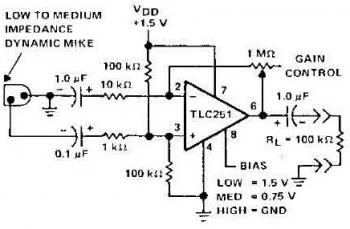
The schematic diagram of a microphone preamplifier is based on the operational amplifier TC251. The TC251 operates with low bias and functions with a supply voltage of only 1.5 V, drawing an electric current of just 10 mA, making it suitable for battery operation. The circuit has a frequency response of 3dB, ranging from 27 Hz to 4.8 kHz. The TC251 is a low-cost, low-power programmable operational amplifier designed to work with single or dual power supplies. Its input common-mode range extends to the negative rail, and its low power consumption makes it ideal for battery-powered or energy-efficient applications. A bias-select pin allows programming of one of three AC performance and power-dissipation levels to accommodate various applications. The series operates down to a 1.4 V supply and remains stable at unity gain.
The microphone preamplifier circuit utilizing the TC251 operational amplifier is designed to enhance the signal from a microphone before it is processed by subsequent audio equipment. The TC251 is particularly advantageous in portable audio applications due to its low operating voltage and minimal current draw, which prolongs battery life.
The circuit's design includes a biasing network that ensures optimal performance across its specified frequency range, maintaining fidelity in sound reproduction. The frequency response of 27 Hz to 4.8 kHz is suitable for capturing the nuances of voice and instruments, making it effective for various audio applications, including recording and live sound reinforcement.
Incorporating a bias-select pin allows for flexibility in configuring the preamplifier to meet specific application requirements. By selecting different bias settings, the user can optimize the circuit for either lower power consumption or enhanced performance, depending on the needs of the application. This feature is particularly beneficial in scenarios where battery life is critical, allowing the designer to balance performance and efficiency.
The TC251's stability at unity gain ensures reliable operation in feedback configurations, which is essential for maintaining signal integrity in audio processing. Overall, the microphone preamplifier circuit based on the TC251 operational amplifier represents a robust solution for low-power, high-performance audio applications.Here the schematic diagram of mic preamplifier which build based on operational amplifier TC251. The TLC251 is operating in low bias. The circuit works with only 1. 5 V supply draws electric current of only 10 mA, so the battery operation will be prefered. Circuit frequency response is 3dB, 27 Hz to 4. 8 kHz. The TLC251 are low-cost, low-power progr ammable operational amplifiers designed to operate with single or dual power supplies. Because the input common-mode range extends to the negative rail and the power consumption is very low, this chip is ideally suited for battery-powered or energy-conserving applications. A bias-select pin can be used to program one of three ac performance and power-dissipation levels to suit the application.
The series features operation down to a 1. 4V supply and is stable at unity gain. 🔗 External reference
The microphone preamplifier circuit utilizing the TC251 operational amplifier is designed to enhance the signal from a microphone before it is processed by subsequent audio equipment. The TC251 is particularly advantageous in portable audio applications due to its low operating voltage and minimal current draw, which prolongs battery life.
The circuit's design includes a biasing network that ensures optimal performance across its specified frequency range, maintaining fidelity in sound reproduction. The frequency response of 27 Hz to 4.8 kHz is suitable for capturing the nuances of voice and instruments, making it effective for various audio applications, including recording and live sound reinforcement.
Incorporating a bias-select pin allows for flexibility in configuring the preamplifier to meet specific application requirements. By selecting different bias settings, the user can optimize the circuit for either lower power consumption or enhanced performance, depending on the needs of the application. This feature is particularly beneficial in scenarios where battery life is critical, allowing the designer to balance performance and efficiency.
The TC251's stability at unity gain ensures reliable operation in feedback configurations, which is essential for maintaining signal integrity in audio processing. Overall, the microphone preamplifier circuit based on the TC251 operational amplifier represents a robust solution for low-power, high-performance audio applications.Here the schematic diagram of mic preamplifier which build based on operational amplifier TC251. The TLC251 is operating in low bias. The circuit works with only 1. 5 V supply draws electric current of only 10 mA, so the battery operation will be prefered. Circuit frequency response is 3dB, 27 Hz to 4. 8 kHz. The TLC251 are low-cost, low-power progr ammable operational amplifiers designed to operate with single or dual power supplies. Because the input common-mode range extends to the negative rail and the power consumption is very low, this chip is ideally suited for battery-powered or energy-conserving applications. A bias-select pin can be used to program one of three ac performance and power-dissipation levels to suit the application.
The series features operation down to a 1. 4V supply and is stable at unity gain. 🔗 External reference
Warning: include(partials/cookie-banner.php): Failed to open stream: Permission denied in /var/www/html/nextgr/view-circuit.php on line 713
Warning: include(): Failed opening 'partials/cookie-banner.php' for inclusion (include_path='.:/usr/share/php') in /var/www/html/nextgr/view-circuit.php on line 713
